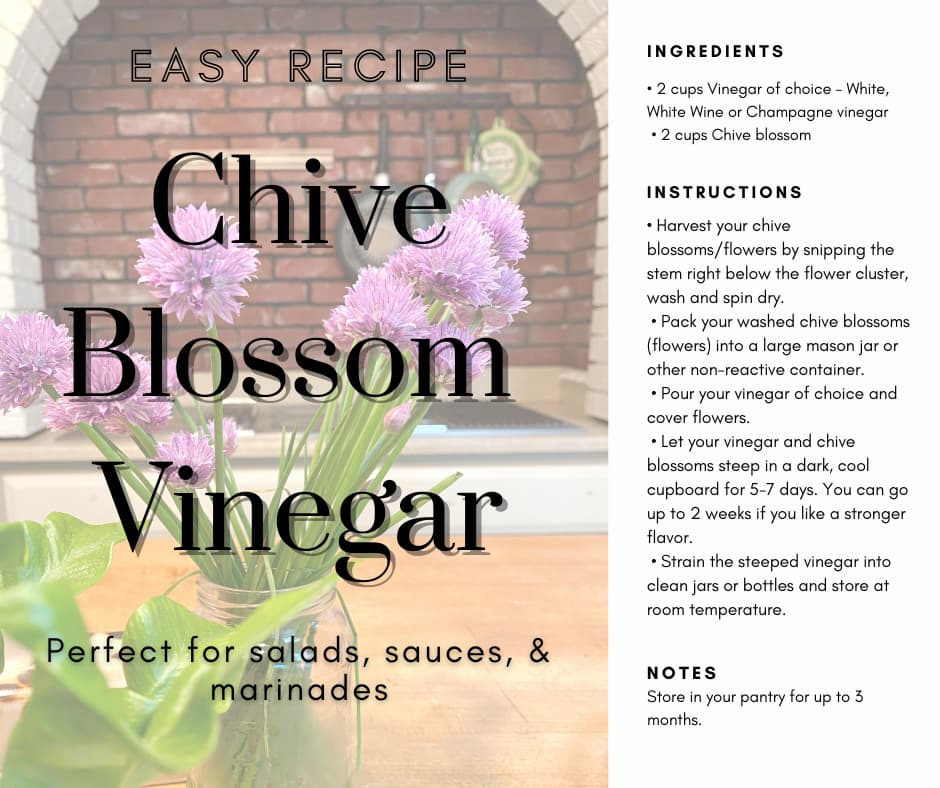a nutrition series by Michelle Chappel
It’s such a treat this time of year when we get to enjoy fresh chives. These slim members of the onion family are often used to add a mild onion flavor to foods, such as salads and sauces.
As a member of the onion family, it shares the same key health properties.
They are pungent, and influence the lungs, kidneys and liver.(1) They have antibacterial, lipid-reducing, and antihypertensive properties.(2) These are due to active compounds found in chives, as well as their flowers.
That’s right, not only are the blossoms of chives edible they also provide a good source of unsaturated fatty acids, plant sterols and vitamin E.(3) Plant sterols occur naturally in parts of the plant and are cholesterol-lowering agents that have been found to have anti-inflammatory and antioxidant effects.(3) Studies have found that the blossoms of the chive contain higher amounts of ascorbic acid and polyphenols compared to the dried chive leaves.(3)
So don’t be afraid to eat those blossoms and gain all the nutritional value from your chives.
Try this easy recipe to create a gorgeous pink chive blossom scented vinegar. Perfect for summer salads or grilling marinades.

Chive Blossom Vinegar
Ingredients
- 2 cups Vinegar of choice – White, White Wine or Champagne vinegar
- 2 cups Chive blossom
Instructions
- Harvest your chive blossoms/flowers by snipping the stem right below the flower cluster, wash and spin dry.
- Pack your washed chive blossoms (flowers) into a large mason jar or other non-reactive container.
- Pour your vinegar of choice and cover flowers.
- Let your vinegar and chive blossoms steep in a dark, cool cupboard for 5-7 days. You can go up to 2 weeks if you like a stronger flavor.
- Strain the steeped vinegar into clean jars or bottles and store at room temperature.
Notes – Store in your pantry for up to 3 months.
Nutrition – Calories: 20kcal
References
1. Pitchford P. Healing with Whole Foods: Asian Traditions and Modern Nutrition. North Atlantic Books, Berkeley CA. 2002
2. Schulz V. Hansel R. Blumenthal M and Tyler V.E. Rational Phytotherapy A Reference Guide for Physicians and Pharmacists. 5th edition. Springer. 2004.
3.Grzeszczuk, Monika & Wesołowska, Aneta & Jadczak, Dorota & Jakubowska, Barbara. (2011). Nutritional value of chive Edible Flowers. Acta Sci. Pol. Hortorum Cultus. 10. 85-94.
